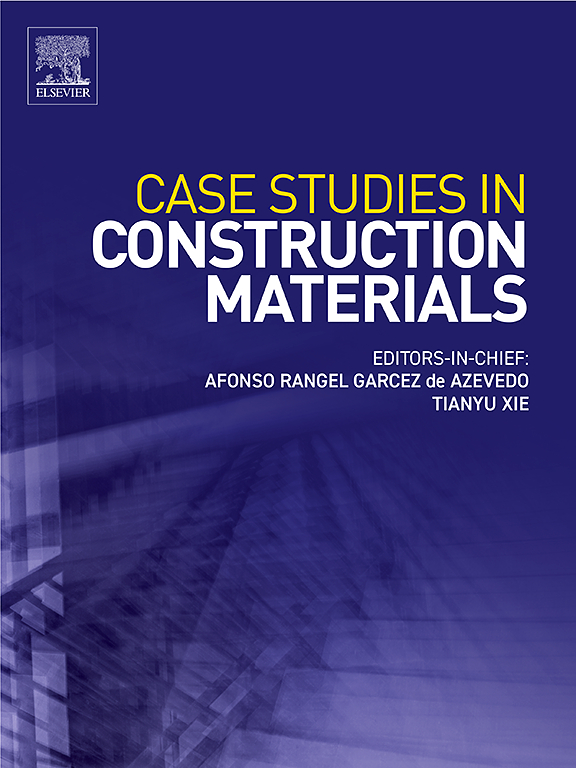Tailoring the hardening performance and microstructure of calcium aluminate cement through carbonation curing
IF 6.5
2区 工程技术
Q1 CONSTRUCTION & BUILDING TECHNOLOGY
引用次数: 0
Abstract
The hydration of calcium aluminate cement (CAC) generates metastable phases such as CAH10 and C2AH8, which subsequently transform into more stable products, leading to a reduction in strength and causing volumetric instability. The present study aims to alter the hydration pathway with improved mechanical strength and volume stability of CAC by carbonation curing with different temperatures and durations. The mechanical strength, dimensional changes, carbonation products, and microstructure were comprehensively investigated. The results reveal that carbonation curing converts the metastable hydration products C2AH8 and CAH10 of CAC directly into AH3 and calcium carbonate, primarily in the forms of amorphous CaCO3, calcite, and aragonite. Suitable early carbonation curing and subsequent water curing could increase CO2 uptake and carbonation depth, reduce total porosity, and optimize the pore structure. CAC subjected to 4 hours of carbonation curing at 20 °C exhibited excellent volume stability and significant enhancement of compressive strength up to 106 MPa with 90 days of subsequent water curing. A shorter carbonation duration leveraged the synergy between carbonation reactions and subsequent hydration to enhance the macroscopic performance of CAC significantly. This study offers new insights into innovative methods for mitigating the unstable transformation of hydrates in CAC by effectively utilizing and sequestering CO2.
通过碳化固化调整铝酸钙水泥的硬化性能和微观结构
铝酸钙水泥(CAC)的水化会产生CAH10和C2AH8等亚稳相,这些亚稳相随后会转化为更稳定的产物,从而导致强度降低并引起体积不稳定。本研究旨在通过不同温度和时间的碳化固化,改变CAC的水化途径,提高CAC的机械强度和体积稳定性。对其机械强度、尺寸变化、碳化产物和微观组织进行了综合研究。结果表明,碳化固化将CAC的亚稳水化产物C2AH8和CAH10直接转化为AH3和碳酸钙,主要以无定形CaCO3、方解石和文石的形式存在。适当的早期碳化养护和后续水养护可以增加CO2吸收量和碳化深度,降低总孔隙率,优化孔隙结构。CAC在20°C下进行4 小时碳化养护,表现出优异的体积稳定性,并在随后的90天水养护中显著提高抗压强度,最高可达106 MPa。较短的碳化时间利用了碳化反应和后续水化反应之间的协同作用,显著提高了CAC的宏观性能。该研究为通过有效利用和封存二氧化碳来减轻碳碳中水合物不稳定转化的创新方法提供了新的见解。
本文章由计算机程序翻译,如有差异,请以英文原文为准。
求助全文
约1分钟内获得全文
求助全文
来源期刊

Case Studies in Construction Materials
Multiple-
CiteScore
7.60
自引率
19.40%
发文量
842
审稿时长
63 days
期刊介绍:
Case Studies in Construction Materials provides a forum for the rapid publication of short, structured Case Studies on construction materials. In addition, the journal also publishes related Short Communications, Full length research article and Comprehensive review papers (by invitation).
The journal will provide an essential compendium of case studies for practicing engineers, designers, researchers and other practitioners who are interested in all aspects construction materials. The journal will publish new and novel case studies, but will also provide a forum for the publication of high quality descriptions of classic construction material problems and solutions.
 求助内容:
求助内容: 应助结果提醒方式:
应助结果提醒方式:


